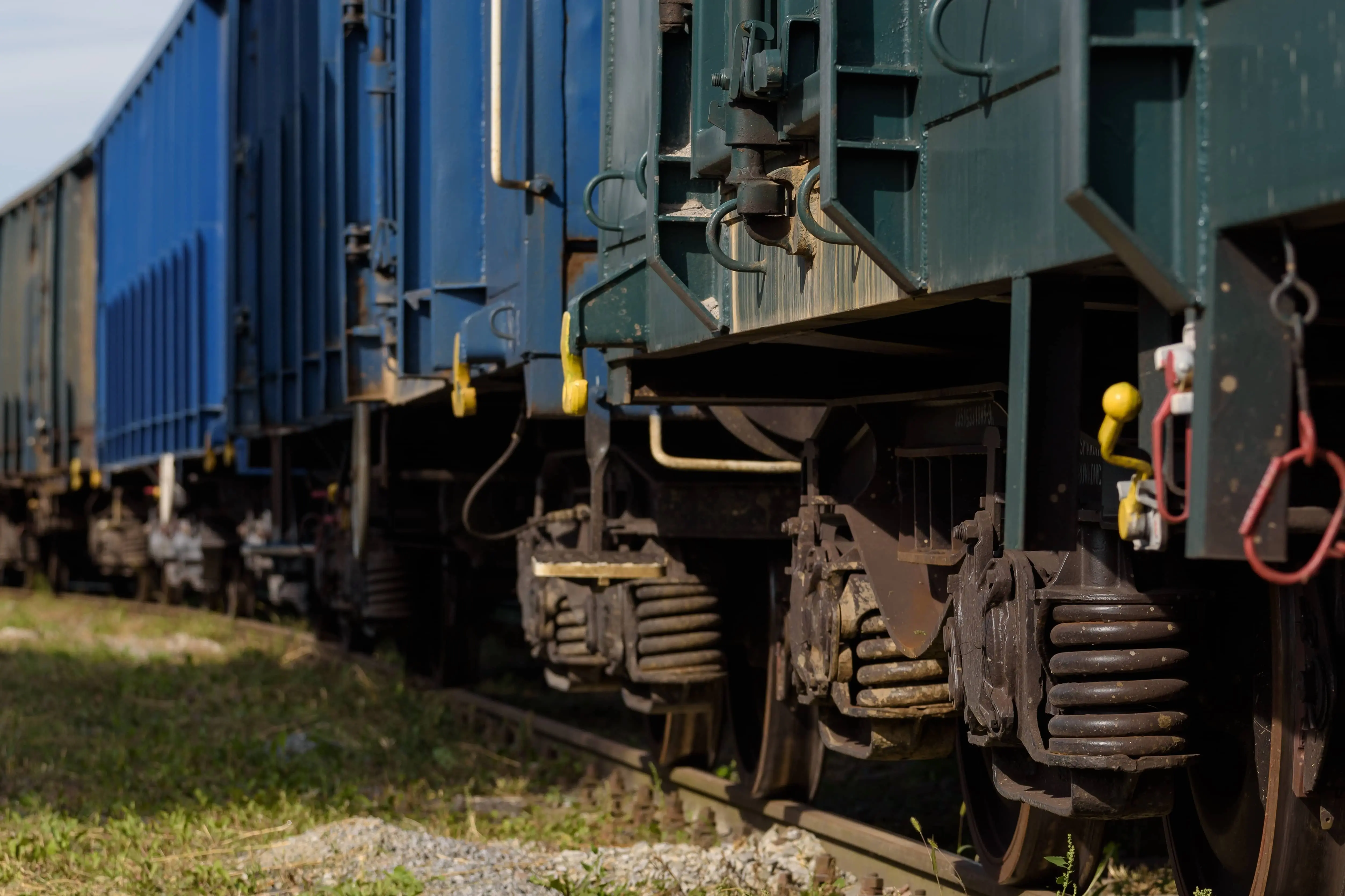Trains move 15.76 billion tonne-kilometres of domestic freight across the UK every year. The power behind this? Type 5 locomotives - the heavy hauling engines moving everything from fuel to food.
Read on to learn more about Type 5 locomotives and explore the trains in this powerful class that shaped Britain’s freight railways.

Type 5 locomotives on the British Rail network
In the 1970s, British Rail (BR) classified trains by horsepower. Type 5 trains are the most powerful, with a minimum of 3,000 horsepower.
Class 55 ‘Deltic’
The Class 55, introduced in 1961 and better known as the ‘Deltic train’, was a pioneering Type 5 diesel locomotive designed for high-speed passenger services on the East Coast Mainline.
Only 22 were built, but their high-revving engines (1,500 RPM) and 100mph top speed set a new standard. Their small fleet size and complex engines made the trains costly to maintain, leading to them being replaced by the more advanced InterCity 125.
You can see restored Class 55s at the National Railway Museum in York and other heritage railways across Britain.
Class 56
Built between 1976 and 1984, the Class 56 delivered 3,250 horsepower, making it ideal for heavy freight, including coal, steel, and intermodal traffic.
Nicknamed ‘Gridirons’ by enthusiasts for their grid-like horn covers, 135 units were produced. They introduced air brakes to British Rail, and were praised for their toughness, even being used in constructing France’s LGV Es t high-speed line.
High maintenance costs led to their retirement in the early 2000s, however, a few still operate today.
Class 58
The Class 58 was the most powerful single-unit diesel locomotive in the world at time of construction. With 3,300 horsepower, it was designed for freight but suffered from wheel slip in some conditions.
It got the nickname ‘Bone’ for its unique look - a very narrow body and a cabin at each end, its design influenced future BR models.
The Class 58 was the last diesel locomotive built at British Rail Engineering Limited’s Doncaster Works. Only four class 58s survive in preservation.
Class 59
Fifteen Class 59 were introduced between 1985 and 1995 by General Motors for private companies like Foster Yeoman.
These were the first American-built diesel locomotives in the UK to run on British train tracks. Each Class 59 delivered 3,300 horsepower.
They remain in service today, a testament to their reliability. One of Foster Yeoman's 59s worked in Germany for 17 years before returning to Britain in 2014.

Class 60
Built between 1989 and 1993, the Class 60 (nicknamed ‘Tug’) featured 3,100 horsepower engines for heavy freight. After BR’s privatisation, 100 were acquired by English Welsh & Scottish (EWS). Many were later stored due to low demand; they began to withdraw from service in 2004.
In the 2010s, 20 refurbished "Super 60s" extended their operational lives by 15 years. Several remain active across the network.
Class 62
The Class 62 was a projected classification for Type 5 coal train locomotives proposed in the early 1990s. No Class 62 locomotives were ever built.
Class 65
This proposed 4,000 horsepower freight locomotive for liner trains was also never produced.
Class 66
Launched in 1998 to replace ageing freight stock, the Class 66 became the workhorse of UK freight. Over 500 units were manufactured, with two guarantees - a 95% availability guarantee and at least 180 days between failures.
The last 66 came off the production line in 2016. These locomotives remain widely used today across Britain and Europe.

Class 67
Built between 1999 and 2000, 30 Class 67s were produced for high-speed postal and passenger services. Capable of 125mph, they remain among the UK’s fastest diesel locomotives.
The versatile coupling systems allow them to operate on 67s on passenger services like Caledonian Sleeper Service and even pull the Royal Train.
Class 68
Built by Stadler Rail Valencia and introduced in 2014, the Class 68 delivers 3,800 horsepower, producing more than enough power to move people and freight.
The Class 68 is one of the UK network's most efficient trains and complies with European emission standards.
Today, it's used on passenger services like Chiltern Railways, as well as freight services, including hauling nuclear flask and charter trains.
The Class 68s are an essential part of the UK railways and are expected to stay in service for decades.
Class 69
An innovative rebuild of the Class 56, the Class 69 was developed by Progress Rail to offer a lower-cost, lower-impact alternative to new builds.
16 units were converted with new engines and updated components. They offer performance close to the Class 66 and feature heritage liveries such as the Union Jack and BR’s classic blue.

Class 70
Built by General Electric from 2008 and 2017, the Class 70 is the most powerful Co-Co diesel locomotive currently operating in the UK.
Its design, with external walkways and noise-reducing features, prioritises both function and crew comfort.
Today, 36 Class 70s are in operation in the UK, often in Freightliner and Colas Rail liveries.

Travel with Avanti
Type 5 locomotives were vital in Britain’s shift from steam to a cleaner form of fuel. Since 1961, they’ve kept people and goods moving safely and efficiently.
Today, Avanti West Coast continues that legacy with high-speed, low-emission travel on our modern fleet of Evero and Pendolino trains - two of the most advanced train types in the UK.














